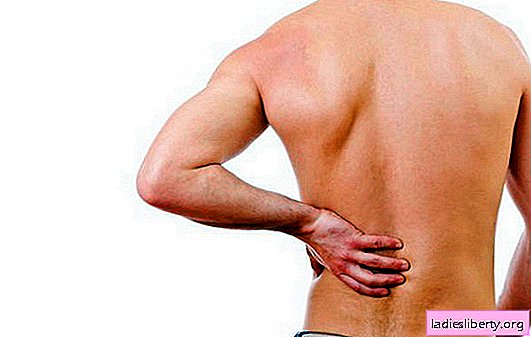
The increased need of the female body for vitamins is associated with physiological characteristics. Due to monthly blood loss, various stresses that are more difficult for women, pregnancy, childbirth and lactation, the loss of vitamins and minerals occurs faster and in larger quantities than men. One of the vitamins of women's health is D3, which determines the condition of bones, joints, nails, teeth, hair and skin, the regularity of the menstrual cycle.
Vitamin D3 - Its Norm for Women and Where It Is Contained
Vitamin D3 for women plays an important role in the state of not only the musculoskeletal system. This is one of the vitamins of group D - cholecalciferol. It is synthesized in the upper layers of the skin under the influence of ultraviolet rays. For normal health and a sufficient amount of vitamin in the body, you need to be in the sun 3 times a week with an open face and hands. The rest is compensated by vitamins from food. Cholecalciferol is contained in fish oil, cod liver, fatty fish (cod, herring, halibut, sturgeon, caviar - in that order of decreasing). In dairy products - a small amount. In vegetable products it is not, vegetables do not contain it. There are three types of mushrooms that are grown artificially in Western countries and are used by vegetarians. In our country they are not.
Vitamin D3 contained in foods is not enough to replenish the daily requirement for it. The daily dose is 600 - 800 IU, and in the yolk of one chicken egg contains 41 IU. To cover the daily need for calciferol, provided it is impossible to stay in the sun, you need 20 eggs, or eat 1 kilogram of cottage cheese or 100 grams of hard cheese every day. Of the products of plant origin, calciferol is contained in corn oil, in the rest it is absent or its quantity is so miserable that it will not cover a small part of what is needed. With swarthy and dark skin, the need for calciferol is higher, since its formation slows down - the usual dose will lead to hypovitaminosis.
Vitamin D3 for women cannot be replaced with any other compounds. Cholecalciferol is involved in metabolic processes and the absorption of calcium, magnesium and phosphorus, affecting the activity of almost all organs and systems in the body. It acts like a hormone, accelerating carbohydrate metabolism.
Causes of Vitamin D3 Deficiency for Women
Vitamin D3 plays a particularly important role for women during pregnancy, lactation and with the onset of menopause - after 45 years. In addition, at any age, regardless of pregnancy and child feeding, a deficiency of calciferol may develop. The reasons may be different:
· Insufficient exposure to the sun;
Vegetarianism
· Malnutrition and malnutrition;
· Smoking and drinking alcohol;
· Various diets;
· Weight loss of more than 10 kg;
· Drinking large amounts of coffee (it is not recommended to drink more than 4 cups of coffee per day);
· Long-term treatment with heparin and NSAIDs;
Pathology of the stomach, intestines (Crohn's disease, celiac disease), liver and kidneys (diseases that occur with the development of renal failure);
· Condition after bowel surgery;
· Severe systemic diseases - cystic fibrosis (cystic fibrosis of the pancreas), inherited.
Manifestations of hypovitaminosis D3 in women
Symptoms of vitamin D3 deficiency in women are:
Osteomalacia
Osteoporosis;
Pain in bones, joints and muscles;
Cramps in the muscles of the legs and arms;
· Hair loss, exfoliation and increased fragility of nails, deterioration of the quality of the skin, its aging, diseases of the teeth and gums;
Insomnia and drowsiness during the day;
· A sharp deterioration in visual acuity and "twilight" vision;
· loss of appetite;
· Change in body weight - obesity or unmotivated weight loss;
· fast fatiguability;
· A constant feeling of fatigue and decreased performance;
Increased irritability, nervousness, frequent depression;
· Decreased immunity, and, as a consequence of this: frequent colds and other infectious diseases, the development of cancer (breast cancer, intestines), psoriasis, multiple sclerosis.
Since calciferol is involved in carbohydrate metabolism and increases the body's sensitivity to insulin by indirectly regulating blood glucose levels - its deficiency can cause diabetes mellitus. In addition, increased sensitivity of tissues to insulin leads to increased production of estrogen in the ovaries, ovulation is disturbed, resulting in infertility and early menopause.
With hypovitaminosis D3, the metabolism of women, fat burning slows down significantly, the state of blood vessels deteriorates (vitamin is involved in cholesterol metabolism), which leads indirectly to diseases of the cardiovascular system. It also plays a role in the normal functioning of the thyroid and parathyroid glands.
The danger of excess vitamin D3 for women.
An excess of vitamin D3 is dangerous for women at any age. The peculiarity of calciferol is that it belongs to fat-soluble vitamins and is not excreted from the body as quickly as water-soluble. In case of malabsorption in the stomach and intestines (with the pathology of these organs or with excessive intake of vitamin into the body), the vitamin accumulates (accumulates) in the liver and adipose tissue. There are some positive aspects to this: if the intake of calciferol in the body decreases or temporarily, its supply will be spent for a certain time. Thus, hypovitaminosis with all its clinical symptoms does not develop immediately. With an excess of vitamin D3, a lot of calcium accumulates in the body in the form of calcifications in various organs: lungs, blood vessels, kidneys, heart.
Symptoms of calciferol hypervitaminosis in women are:
Feeling of thirst, nausea, vomiting, diarrhea;
Fever
Severe headaches;
· A sharp decrease in urine, traces of blood in the urine, protein and white blood cells;
· Tachycardia, arrhythmias, increased blood pressure;
Hepatomegaly - an increase in the liver;
Anemia
Sharp sweating;
Cyanosis of the skin;
Fainting.
An increased amount of vitamin is formed in the body while taking the vitamin and at the same time for a long time in the sun. Hypervitaminosis can also occur with strong and prolonged insolation in the sun or in a tanning bed, when the skin turns red or burns before burns. Excessive and uncontrolled use of vitamin D3 by a woman during pregnancy can lead to rapid premature closure of the fontanel in the child, which will subsequently lead to malformations or various unpleasant symptoms in adolescents with increased intracranial pressure. Therefore, when taking vitamin during pregnancy, even if it is prescribed by a doctor, you need to approach this with special attention and caution.
Mineralization of the skeleton of the fetus begins at 8 weeks of gestation. In the same period, the development of dental tissue begins. Therefore, there is a significant consumption of calcium and vitamin D3 from the mother's body. From 21 weeks, the growth of the child takes on an accelerated pace, the skeleton is actively mineralized. When osteopenia is detected in a woman, vitamin D3 is prescribed from 10 weeks.
The development of osteoporosis is dangerous at any age
Osteoporosis, which affects every 3 women at the age of 50, is characterized by low bone mass (osteopenia) and a violation of bone microarchitectonics. Calcium leaves the bones with a deficiency of vitamin D3 in women, their fragility and brittleness increase, the risk of severe fractures increases: the femoral neck, vertebrae, condyles, compression fractures of the vertebral bodies. It is proved that mortality is higher than with oncology. With osteoporosis, they worry:
· Frequent fractures;
· Sharp weakness, lethargy, a feeling of constant fatigue;
· Pain in the bones, spine, muscles, joints, which increase with changing weather;
· Reduced growth, the appearance of early gray hair;
Cramps in various muscle groups;
· sleep disturbance;
· Sharp hair loss, their dullness and brittleness;
Periodontal disease, caries, destruction of tooth enamel.
Pathogenesis of osteoporosis:
1. Large loss of cancellous bone compared with compact, which leads to the development of fractures.
2. Decrease in the synthesis of vitamin D3 and the receptors that perceive it with age.
3. Increased activity and an increase in the number of osteoclasts that destroy bone.
A reliable and sufficient diagnostic method is ultrasonic bone densitometry. Radiographically to determine the presence of osteoporosis, especially in the early stages, is impossible.
The appointment of drugs containing vitamin D3 together with calcium is done by the doctor. It is dangerous to engage in self-medication in connection with the development of complications. It is necessary to monitor treatment by a specialist in order to determine the development of hypervitaminosis in time or increase the dose with a lack of vitamin. Currently, there are a variety of vitamin preparations in various forms: tablets, capsules, drops. The best vitamins containing cholecalciferol: Osteomag Vitrum, Calcemin Vitrum, Complivit Calcium D3 forte, Multi - Tabs, Calcium D3 Nycomed. The doctor will help you choose the appropriate one and prescribe the duration of the course of treatment or prevention.











